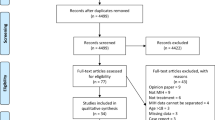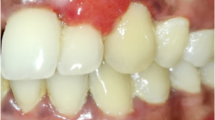Abstract
Chronic apical periodontitis (CAP) is characterized by inflammation and destruction of the apical periodontium that is of pulpal origin, appearing as an apical radiolucent area, and does not produce clinical symptoms. Little is known about whether the PD-1/PD-L1 ratio is associated with the balance between RANKL and OPG in CAP. The relationship between PD-1/PD-L1 and RANKL/OPG in CAP is investigated in this study. A CAP rat model was established using Sprague-Dawley rats. The pulp chambers were exposed to the oral cavity to allow bacterial contamination. The apical tissues of the bilateral mandibular first molars were analyzed for histological morphology using hematoxylin and eosin (H&E) staining. Immunohistochemistry and qRT-PCR were used to determine the expression of PD-1, PD-L1, OPG, and RANKL mRNA and proteins in periapical tissues and mandibular samples, respectively. The radiological images indicated a poorly defined low-density shadow and alveolar bone resorption after periodontitis induction. Histological analysis revealed an infiltration of inflammatory cells and alveolar bone resorption in the periapical tissues. Mandibular mRNA and periapical protein expression of PD-1, PD-L1, and RANKL was upregulated 7–28 days after periodontitis induction, while the expression of OPG was downregulated. No significant relationship was observed between PD-1/PD-L1 and RANKL/OPG at either mRNA or protein levels in CAP. There is an increased expression of PD-1, PD-L1, and RANKL and a decreased expression of OPG, indicating progression of CAP.






Similar content being viewed by others
Data availability
All data generated or analyzed during this study are included in this article. Further enquiries can be directed to the corresponding author.
References
Braz-Silva PH, Bergamini ML, Mardegan AP, De Rosa CS, Hasseus B, Jonasson P. Inflammatory profile of chronic apical periodontitis: a literature review. Acta Odontol Scand. 2019;77(3):173–80.
Fouad AF, Khan AA. Etiology and pathogenesis of pulpitis and apical periodontitis. Essential Endodontology: Prevention and Treatment of Apical Periodontitis. 2019:59–90.
Sun X, Yang Z, Nie Y, Hou B. Microbial communities in the extraradicular and intraradicular infections associated with persistent apical periodontitis. Front Cell Infect Microbiol. 2022;11:1391.
Silva T, Garlet GP, Fukada SY, Silva JSd, Cunha FdQ. Chemokines in oral inflammatory diseases: apical periodontitis and periodontal disease. Journal of dental research. 2007;86(4):306–19.
Ramadan DE, Hariyani N, Indrawati R, Ridwan RD, Diyatri I. Cytokines and chemokines in periodontitis. European journal of dentistry. 2020;14(03):483–95.
Davanian H, Gaiser RA, Silfverberg M, Hugerth LW, Sobkowiak MJ, Lu L, et al. Mucosal-associated invariant T cells and oral microbiome in persistent apical periodontitis. Int J Oral Sci. 2019;11(2):16. https://doi.org/10.1038/s41368-019-0049-y.
Wei L, Xu M, Xiong H. An update of knowledge on the regulatory role of Treg cells in apical periodontitis. Oral Dis. 2021;27(6):1356–65.
Karteva T, Manchorova-Veleva N. The role of the immune response in chronic marginal and apical periodontitis. Folia Med. 2020;62(2):238–43.
Bergamini ML, Mardegan AP, De Rosa CS, Palmieri M, Sarmento DJdS, Hiraki KRN et al. Presence of Langerhans cells, regulatory T cells (Treg) and mast cells in asymptomatic apical periodontitis. Brazilian oral research. 2020;34.
Barber DL, Wherry EJ, Masopust D, Zhu B, Allison JP, Sharpe AH, et al. Restoring function in exhausted CD8 T cells during chronic viral infection. Nature. 2006;439(7077):682–7.
Goodman A, Patel SP, Kurzrock R. PD-1–PD-L1 immune-checkpoint blockade in B-cell lymphomas. Nat Rev Clin Oncol. 2017;14(4):203–20. https://doi.org/10.1038/nrclinonc.2016.168.
Zhao J, Roberts A, Wang Z, Savage J, Ji R-R. Emerging role of PD-1 in the central nervous system and brain diseases. Neurosci Bull. 2021;37:1188–202.
Buchbinder EI, Desai A. CTLA-4 and PD-1 pathways: similarities, differences, and implications of their inhibition. Am J Clin Oncol. 2016;39(1):98.
Kajiya M, Giro G, Taubman MA, Han X, Mayer MP, Kawai T. Role of periodontal pathogenic bacteria in RANKL-mediated bone destruction in periodontal disease. J Oral Microbiol. 2010;2(1):5532.
Kohli SS, Kohli VS. Role of RANKL–RANK/osteoprotegerin molecular complex in bone remodeling and its immunopathologic implications. Indian journal of endocrinology and metabolism. 2011;15(3):175.
Menezes R, Bramante CM, da Silva Paiva KB, Letra A, Carneiro E, Fernando Zambuzzi W, et al. Receptor activator NFκB-ligand and osteoprotegerin protein expression in human periapical cysts and granulomas. Oral Surgery, Oral Medicine, Oral Pathology, Oral Radiology, and Endodontology. 2006;102(3):404–9. https://doi.org/10.1016/j.tripleo.2005.10.054.
Fan R, Sun B, Zhang C-f, XUAN W, WANG Q-q, YIN X-z. Receptor activator of nuclear factor kappa B ligand and osteoprotegerin expression in chronic apical periodontitis: possible association with inflammatory cells. Chinese Medical Journal. 2011;124(14):2162–6.
Livak KJ, Schmittgen TD. Analysis of relative gene expression data using real-time quantitative PCR and the 2− ΔΔCT method. methods. 2001;25(4):402–8.
Delgado RJR, Pinheiro CR, Gasparoto TH, Sipert CR, De Moraes IG, Garcia RB, et al. Programmed death 1 (PD-1) and PD-1 ligand (PD-L1) expression in chronic apical periodontitis. European endodontic journal. 2019;4(1):3.
Barreiros D, Pucinelli CM, Oliveira KMH, Paula-Silva FWG, Nelson Filho P, Silva L, et al. Immunohistochemical and mRNA expression of RANK, RANKL, OPG, TLR2 and MyD88 during apical periodontitis progression in mice. J Appl Oral Sci. 2018;26: e20170512. https://doi.org/10.1590/1678-7757-2017-0512.
Fiorillo L, Cervino G, Laino L, D’Amico C, Mauceri R, Tozum TF, et al. Porphyromonas gingivalis, periodontal and systemic implications: a systematic review. Dentistry journal. 2019;7(4):114.
Ogawa Y, Kobayashi R, Kono T, Toda M, Okada H, Kurita-Ochiai T, et al. Involvement of Fusobacterium Nucleatum in Bone Resorption and Periodontal Tissue Inflammation. International Journal of Oral-Medical Sciences. 2020;18(3–4):296–302.
Bailly C. The implication of the PD-1/PD-L1 checkpoint in chronic periodontitis suggests novel therapeutic opportunities with natural products. Jpn Dent Sci Rev. 2020;56(1):90–6. https://doi.org/10.1016/j.jdsr.2020.04.002.
Kajiya M, Giro G, Taubman MA, Han X, Mayer MP, Kawai T. Role of periodontal pathogenic bacteria in RANKL-mediated bone destruction in periodontal disease. J Oral Microbiol. 2010;2. doi:https://doi.org/10.3402/jom.v2i0.5532.
Huang J-W. PD-1 and PD-1L expression in peripheral blood T lymphocytes of patients with chronic periodontitis and their correlation with the degree of inflammation. Journal of Hainan Medical University. 2017;23(2):135–8.
Weyand CM, Berry GJ, Goronzy JJ. The immunoinhibitory PD-1/PD-L1 pathway in inflammatory blood vessel disease. J Leukoc Biol. 2018;103(3):565–75.
Schönrich G, Raftery MJ. The PD-1/PD-L1 axis and virus infections: a delicate balance. Front Cell Infect Microbiol. 2019;9:207.
Blank C, Mackensen A. Contribution of the PD-L1/PD-1 pathway to T-cell exhaustion: an update on implications for chronic infections and tumor evasion. Cancer Immunol Immunother. 2007;56:739–45.
Liu X, Yang L, Tan X. PD-1/PD-L1 pathway: A double-edged sword in periodontitis. Biomed Pharmacother. 2023;159: 114215.
Yuan W, Wang X, Zhang J, Zhou W, Feng Y, Chen J, et al. Programmed death ligand 1 negatively regulates inflammatory response of chronic periodontitis. Hua Xi Kou Qiang Yi Xue Za Zhi. 2015;33(4):366–9. https://doi.org/10.7518/hxkq.2015.04.009.
Sun X, Li B, Abula D, Wang L, Wang B, Wang Q et al. 01% Nano-silver mediates PD-1/PD-L1 pathway and alleviates chronic apical periodontitis in rats. Odontology. 2023;111(1):154–64. https://doi.org/10.1007/s10266-022-00735-3.
Silva MJ, Kajiya M, AlShwaimi E, Sasaki H, Hong J, Ok P, et al. Bacteria-reactive immune response may induce RANKL-expressing T cells in the mouse periapical bone loss lesion. J Endodont. 2012;38(3):346–50.
Udagawa N, Koide M, Nakamura M, Nakamichi Y, Yamashita T, Uehara S, et al. Osteoclast differentiation by RANKL and OPG signaling pathways. J Bone Miner Metab. 2021;39:19–26.
Pivonka P, Zimak J, Smith DW, Gardiner BS, Dunstan CR, Sims NA, et al. Theoretical investigation of the role of the RANK–RANKL–OPG system in bone remodeling. J Theor Biol. 2010;262(2):306–16.
Greisen SR, Kragstrup TW, Thomsen JS, Hørslev-Pedersen K, Hetland ML, Stengaard-Pedersen K, et al. The programmed death-1 pathway counter-regulates inflammation-induced osteoclast activity in clinical and experimental settings. Front Immunol. 2022;13:773946. https://doi.org/10.3389/fimmu.2022.773946.
Acknowledgements
Not applicable.
Funding
The work was supported by the National Natural Science Foundation of China (No. 81560178).
Author information
Authors and Affiliations
Contributions
Yishan Liu contributed to the study conception and design. Material preparation and data collection and analysis were performed by Qi Wang, Liping Wang, Li Sheng, Bei Zhang, Burlen Jieensi, and Shutao Zheng. The first draft of the manuscript was written by Qi Wang, and all authors commented on previous versions of the manuscript. All authors read and approved the final manuscript.
Corresponding author
Ethics declarations
Conflict of interest
The authors declare that there is no conflict of interest.
Ethics approval
Animal experiments were approved by the Animal Experimental Ethics Committee of Xinjiang Medical University (Approval No. IACUC-20190225–01).
Consent to participate
Not applicable.
Consent to publish
Not applicable.
Additional information
Publisher's Note
Springer Nature remains neutral with regard to jurisdictional claims in published maps and institutional affiliations.
Rights and permissions
Springer Nature or its licensor (e.g. a society or other partner) holds exclusive rights to this article under a publishing agreement with the author(s) or other rightsholder(s); author self-archiving of the accepted manuscript version of this article is solely governed by the terms of such publishing agreement and applicable law.
About this article
Cite this article
Wang, Q., Wang, L., Sheng, L. et al. Correlation between PD-1/PD-L1 and RANKL/OPG in chronic apical periodontitis model of Sprague-Dawley rats. Odontology (2024). https://doi.org/10.1007/s10266-024-00911-7
Received:
Accepted:
Published:
DOI: https://doi.org/10.1007/s10266-024-00911-7




